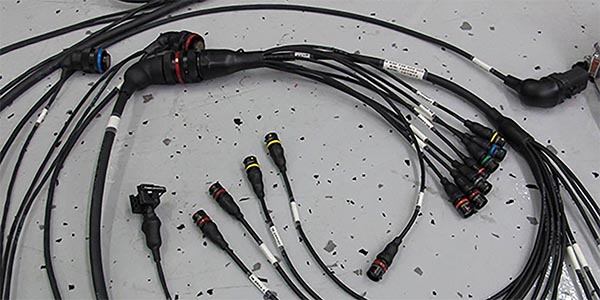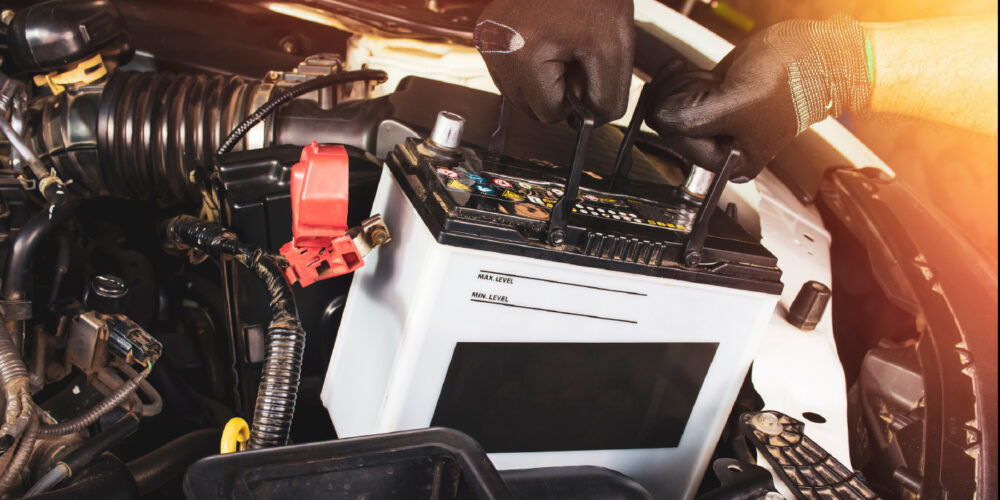Article courtesy ENGINE BUILDER magazine.
Wiring is one of the most frustrating and rewarding jobs for any automotive technician. There is an art and a science that, when done correctly, is on the same level as your quality machine work.
Jeremy Gibbons of Indy Wiring Services (indywiring.net), based outside of Indianapolis, has been in the wiring business since 2001. He has worked for Pi Research, Cosworth, and now works directly with IndyCar for their wiring loom needs. The bulk of Indy Wiring’s business caters to the racing market using Mil-spec and aviation-grade products such as DR25 heat shrink, Spec 55A wire, Raychem molded heat shrink boots, Deutsch Autosport connectors, and a selection of OEM mating connectors. In recent years, Gibbons has branched out to work with some OEMs and industrial clients where they will use products such as Deutsch DTM/DT/DTP/DRC, TE HDP, AMPSEAL, and MOLEX MX23.
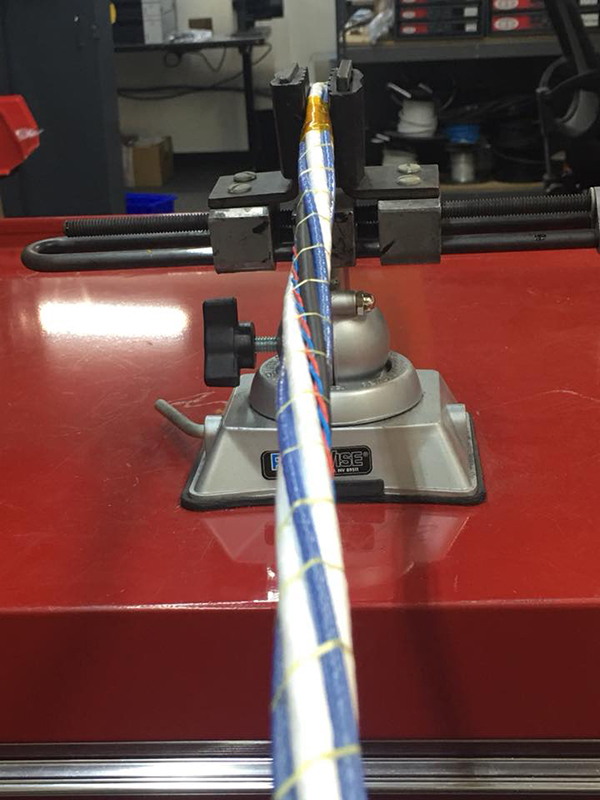
We recently caught up with Gibbons to discuss wiring looms and what engine builders need to make a better harness for their customers. Of course, if an engine builder is not up for making a loom, Indy Wiring Service is more than capable of building one to spec.
One of the things with OE wiring harnesses is that the manufacturers design them on a budget to make them cost-effective, and they are not designed to be cycled very much. On motorsports applications where an engine may be changed a couple of times per race weekend, the harness has to be durable and flexible enough to withstand vibrations as well as having specialized connectors such as Autosports to make quick couplings. The wires must also be high-quality to withstand the constant plugging and unplugging.
Gibbons says that they use nothing but Tefzel wiring for all of their harnesses. Tefzel wire uses an Ethylene Tetrafluoroethylene (ETFE) sheathing with tin-plated copper leads. Most OEs use a TXL wire constructed with copper wire strands and has a sheathing of cross-linked polyethylene (XLPE).
Gibbons says that Tefzel wiring is much better for racing applications than standard automotive wiring for a few reasons. The Tefzel wire is chemical and heat resistant. “There’s a few differences between Tefzel and TXL,” he says. “The temperature rating is a little bit better for the Tefzel. The Tefzel wire is rated at 150 Celsius, whereas TXL blue is 125 C. TXL is also rated for a lower voltage. The Tefzel wire is rated for 600 volts, but obviously, it’s carrying no more than 12 volts max on an IndyCar. However, if there’s an over-voltage situation, the Tefzel will be better able to handle it.”
He also says if you’re making a harness for an ECU or a loom with a lot of wiring, the Tefzel wire is thinner and lighter. Overall the product outperforms standard and TXL wire. Some engine builders and racers also use TXL for race applications, but Gibbons says the cost of Tefzel is not that much more. It depends on your application. However, if you want to use the best, Tefzel is the product of choice for wiring specialists who build looms for a living.
Gibbons says he has started using Tefzel wire for high voltage applications outside of motorsport and he used it when he built all of the harnesses for the first Formula E electric cars launched in 2014. “That was a giant project, and it was just another guy and me. It was a great learning experience.”
Gibbons said that he grew to love wiring by happenstance. “When I was 19, I was just looking for a job and landed at PI Research at the time,” he says. “They sent me over to the UK to be trained for a couple of weeks in wiring. I worked for them for nine years doing wiring and track support, and pretty much you name it. The company was great. I didn’t have a degree, but if you could do the job, they were more than willing to give you an opportunity. There is a lot of tribal knowledge in the motorsport industry – especially in wiring.”
Most engine builders work with metal all day, but with all the electronics involved with engines today, including standalone ECUs, sensors, and so forth, wiring is somewhat unavoidable. However, some guys are better at it than others. While engine builders are typically not building a complete harness, some are making the engine harness if they are using a standalone ECU or for a racing application where you need more robust wiring. You want to build a harness that’ll connect to the ECU and go at least to the firewall where there may be a bulkhead connector for the rest of the chassis harness. A bulkhead fitting enables the engine to be pulled without having to disconnect the harness through the firewall.
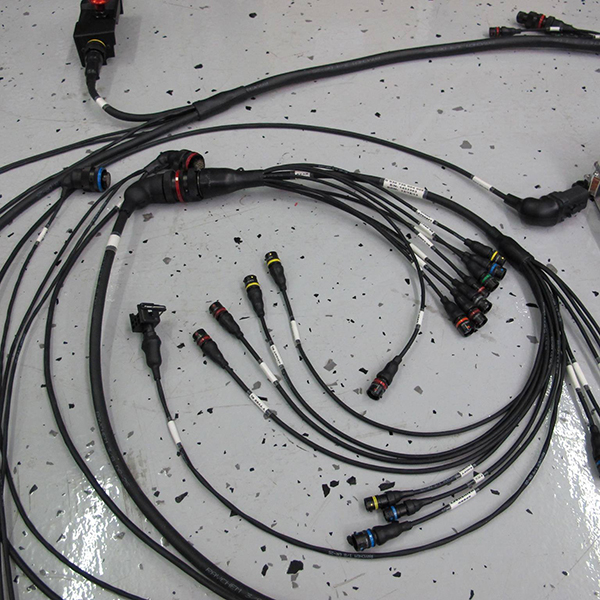
Gibbons says that even for a grassroots race application, he would stick with the better Tefzel wire, but there are cases where TXL may be used. “I would definitely use the Tefzel either the 55-8 from Raychem or a Mil-spec equivalent. The only reason I would ever use the TXL/GXL is to have connectors that need to be sealed in the back. The Tefzel is so thin that it may not seal the back of the OEM connector, but generally, you want to try to put boots on stuff.”
And there are some times when OEM connectors are unavoidable because of the sensors specified by the series. But usually, you can modify the OEM connector to get a boot on the back of that. You can seal it that way instead of relying on the wire seals themselves.
“If I cannot put a boot on it, then we’ll pot the back of it with epoxy and it’s not too bad to service,” Gibbons notes. “Usually, you can heat it and kind of chip it out of there and it will come out clean. But we try to avoid not using boots, but sometimes you can’t help it. And then sometimes you can kind of put some heat shrink on top of the wires and really small heat shrink and then pot that going back into the transition of the cable and then that heat shrink wire will now be thick enough to seal with the automotive seal.
With motorsport wiring, soldering is used very little because it doesn’t give you the best connection. Gibbons says that the problem with solder is that it is inconsistent, depending on how you make the solder joint. Crimping the correct way with the proper tool will give you the best and the most reliable connection.
“Having the proper tool that is dialed in for the crimp and is within calibration matters,” Gibbons says. “Some people will just crimp something like they are smashing it with pliers and call it good. There may be wires hanging out, and you’ve got a big gap. If it looks ugly, it will more than likely fail. Then there’s what we call ‘bird caging’ where the wires bend out or they don’t all go into the connector. There are standards that you need to follow for crimping, but it’s more foolproof than solder. We only use solder when we connect a wire to a screen. We’ll use a solder sleeve. And those are pretty foolproof, too. For instance, if we have a bundle of shielded wires and we need to connect that shield to a ground pin on the connector, we’ll use a solder sleeve.”
Concentric twisting is another trick that wiring specialists do to increase flexibility and to bundle many wires efficiently and neatly. “We do it all the time, especially in race application where you’re taking the harnesses on and off constantly,” he explains. “The flexibility is very important, and it just looks good, and it makes it nice and round. If you have a harness that looks good, people will trust that it’s a quality harness, more than if it looks lumpy. Even if it may work just the same; if it looks better, people will trust it more.”
Depending on the situation, you may have to add some filler wire to get the concentric twist to form correctly, says Gibbons. It’s a formula that needs an equal amount of wire twisted one direction and another amount in the other direction to create flexibility. “We try to minimize filler, but sometimes we do have to add a wire. If you work hard enough, you can get a perfect lay every time with no fillers. It’s kind of a combination of science and art to get a good lay pattern.”
If, for example, you have 12 wires, all the same diameter, Gibbons says it’s easy. “You can do three wires, one way, nine wires the other, and it’s perfectly round. But if you have 45 wires and some are shielded, twisted-pair or some are twisted-pair with 18 gauge and 22 gauge; it becomes a little bit more of an art where you just kind of have to figure it out.”
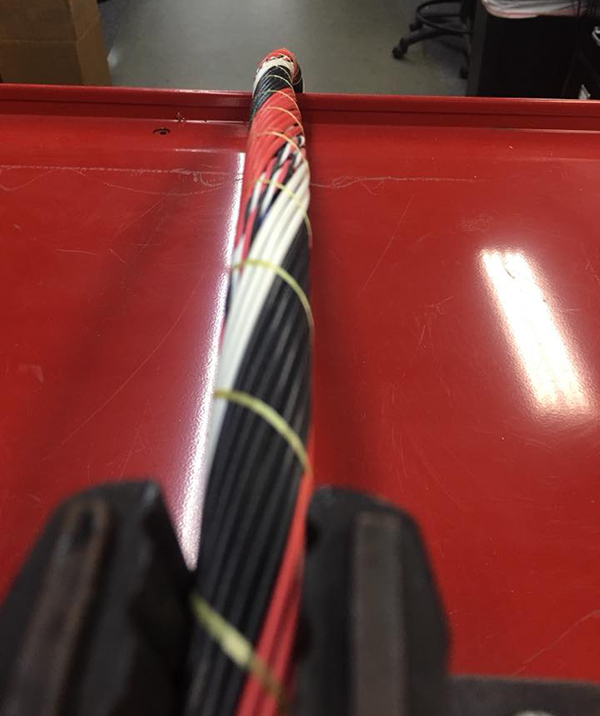
Gibbons says that even if you don’t have a lot of wiring experience, with enough attention to detail, you can build a quality harness, but it takes longer. “There’s no reason someone can’t build their wiring harness. But a lot of times it’s just not having the proper tools, especially on an engine harness with OEM connectors. You may need $20,000 worth of crimpers to do it properly because there are so many different connectors. And everything has its own standard.”
While Gibbons admits that some crimper tools are quite expensive for the OEM connectors, the Autosports only need one crimper tool, and you’re good to go. “You can get all the tools you need for Autosports, DTs, and DTMs for under $1,000,” he says. “It’s the OEM stuff where it starts getting really expensive to get the correct crimper. Many people will buy a cheap automotive crimper at Lowe’s and try to make it work. But that leads to a lot of problems.”
Although there are hundreds of books and thousands of articles about automotive wiring, when it comes to a racing environment, some of the standard connectors and wire products just won’t cut it. The OEMs build harnesses that can be serviceable and last for a couple hundred thousand miles. The wiring also has to live in all environments and is built for high production runs, not for racing.
Since there’s no “race-spec” standard for motorsports wiring, Gibbons says they mostly follow military spec or Mil-spec with a little bit of aviation-grade as well. He says that the important thing for his shop is to follow the highest standard whenever possible. When making a new harness from scratch, one of the “tricks” is to use a solid core wire that can hold shape when you are routing it. This way, you have a more accurate dimension than rope, which some people use instead.
Gibbons tests all of his harnesses by running voltage through each connection to see if there are any voltage drops. The tool he uses is expensive, but if you are only building an engine harness, you can test the leads with a good multimeter. Gibbons also suggests that you invest in a good pair of wire cutters.
“We use Rennsteig cutters that are available from crimptools.com,” Gibbons says. “If you search the part number of the pin that you’re trying to crimp on their website, it’ll come up with a crimp die you should be using. It’s a little expensive, but if you’re doing production. It’s well worth it.”

